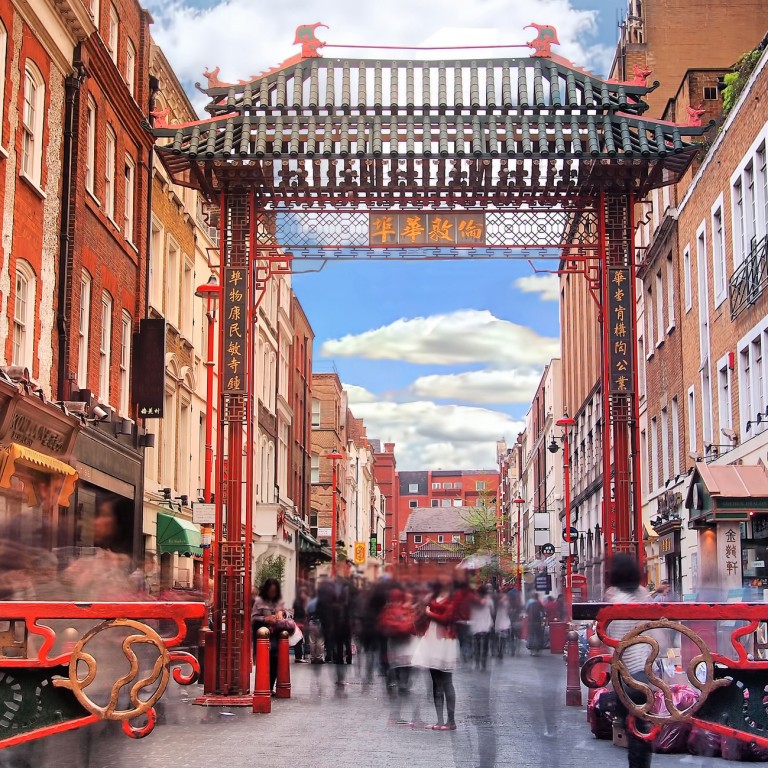
A Chinese food and culture tour through London: noodles, dim sum and ancient treasures for a Sinophile who misses China
- Unable to visit China because of the pandemic, one confessed Sinophile travels around London for her fix of Chinese culture, food, drinks and artefacts
- From dim sum in China Tang at the Dorchester to a cocktail at Opium in Chinatown, and a UK-style suburban takeaway, there is plenty of choice
I miss China. It’s been three long years since I was last there and the itch for street noodles, speedy trains and the wafting scent of temple incense has become overwhelming.
Pre-pandemic, I was visiting annually, often for weeks at a time, travelling to small villages and odd outposts in the name of guidebook research before settling in for a craft beer at the Great Leap Brewing bar in Beijing. But two years into the pandemic, China feels farther away than ever.
Luckily I live in London, a city with historical ties to Hong Kong and the Middle Kingdom. With lockdowns lifted here, I set out to get my China fix in the British capital.
My first stop is Bell Lane, in East London, where it is possible to do a short noodle crawl. Noodle and Beer provides a tongue-numbing Chongqing xiao mian but before I move on to a dinner of Guilin-style mifen at Chew Fun a few doors down, I am distracted in Spitalfields Market by pearl milk tea and someone serving savoury jianbing pancakes from a food stall. I return home and fall into an early food coma.
Another day, another lunch, this time at Xi Home Dumplings, near Trafalgar Square, where I fill up on jiaozi and an accurately rendered roujiamo pork sandwich. Years ago, a friend pointed out that roujiamo sounds like “Roger Moore” and now I can’t order one without also craving a martini.
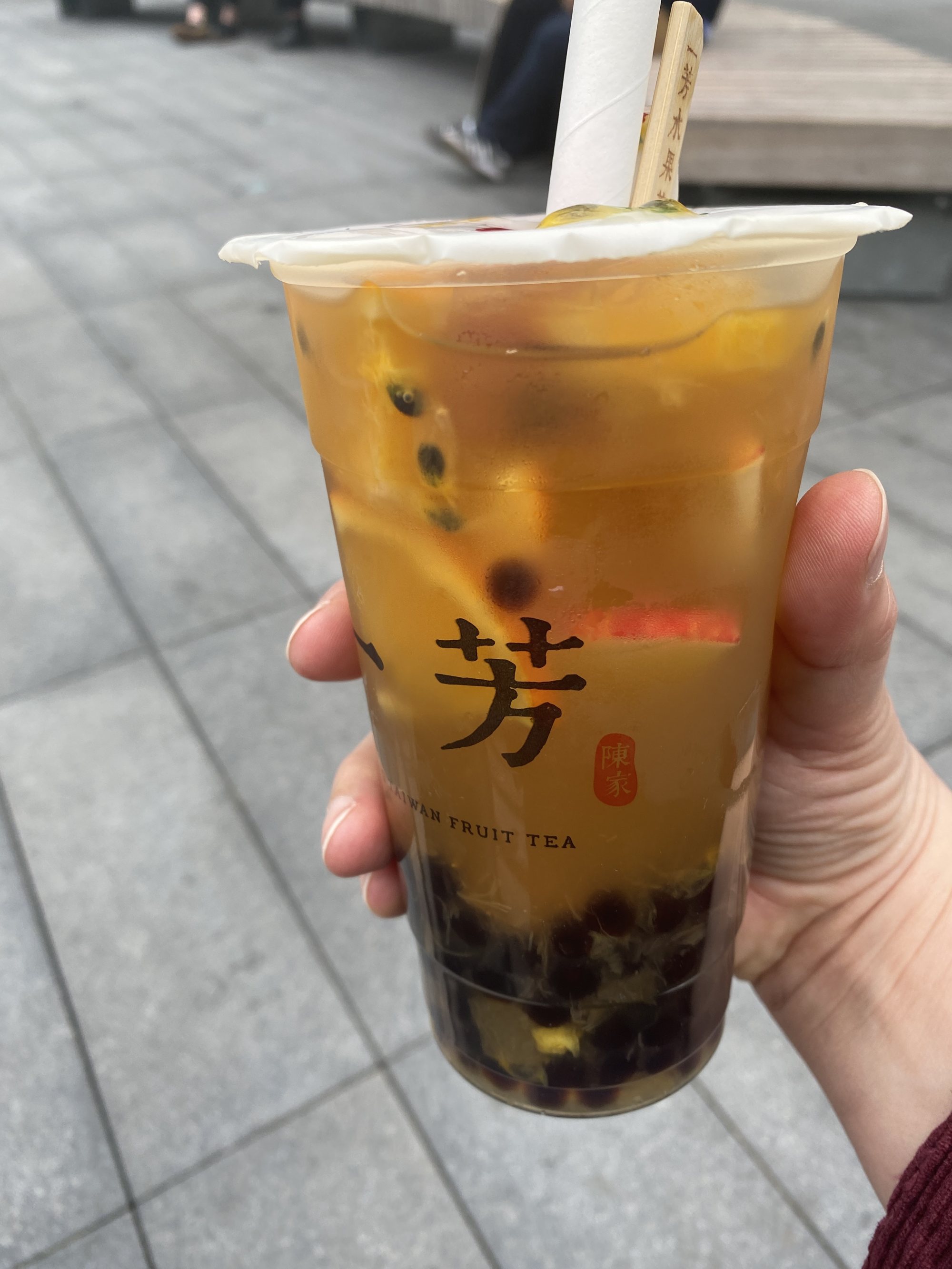
That evening, I sit down with a fellow Sinophile at The Alma, near the Angel tube station, with London-brewed One Mile End IPAs and giant bowls of Yunnanese “crossing-the-bridge” rice noodles (guoqiao mixian). The warming bone broth is speckled with bright, red goji berries and fresh chrysanthemum petals. Heaven in Angel!
For my next culinary trip, I round up a friend who has just returned from a few years living in China. We visit Silk Road, in Camberwell, which purports to serve Xinjiang-style food. In my opinion, it hasn’t been the same since it received a rave review by The Guardian’s food critic back in 2009, and we find the hand-pulled noodles a bit lacklustre. The spicy lamb skewers, however, take me straight back to a street table in Lanzhou, drinking Huanghe beer to a soundtrack of passing mopeds.
The stories behind the people of London’s Chinatown
I am invited for an evening of finery at China Tang, the upmarket restaurant and bar inside the Dorchester Hotel. Dressed in our best, my companion and I descend into the art-deco lounge styled like a 1930s Shanghai speakeasy, where we are handed small bottles of Tang Tea Punch, a potent blend of gin, osmanthus tea, hibiscus syrup and jasmine bitters produced in-house. One sip and I can’t help recalling another night, some years ago in Shanghai’s French Concession, sipping a gin cocktail in the lush bar at the Ruijin Hotel.
The punch having done its work, we sit at a white-linen-covered table in the formal dining room and order basket upon basket of delicate dim sum, washed down with a top-shelf 2013 Ao Yun red wine from Yunnan, while spying on someone who might be a famous rapper at a nearby table.
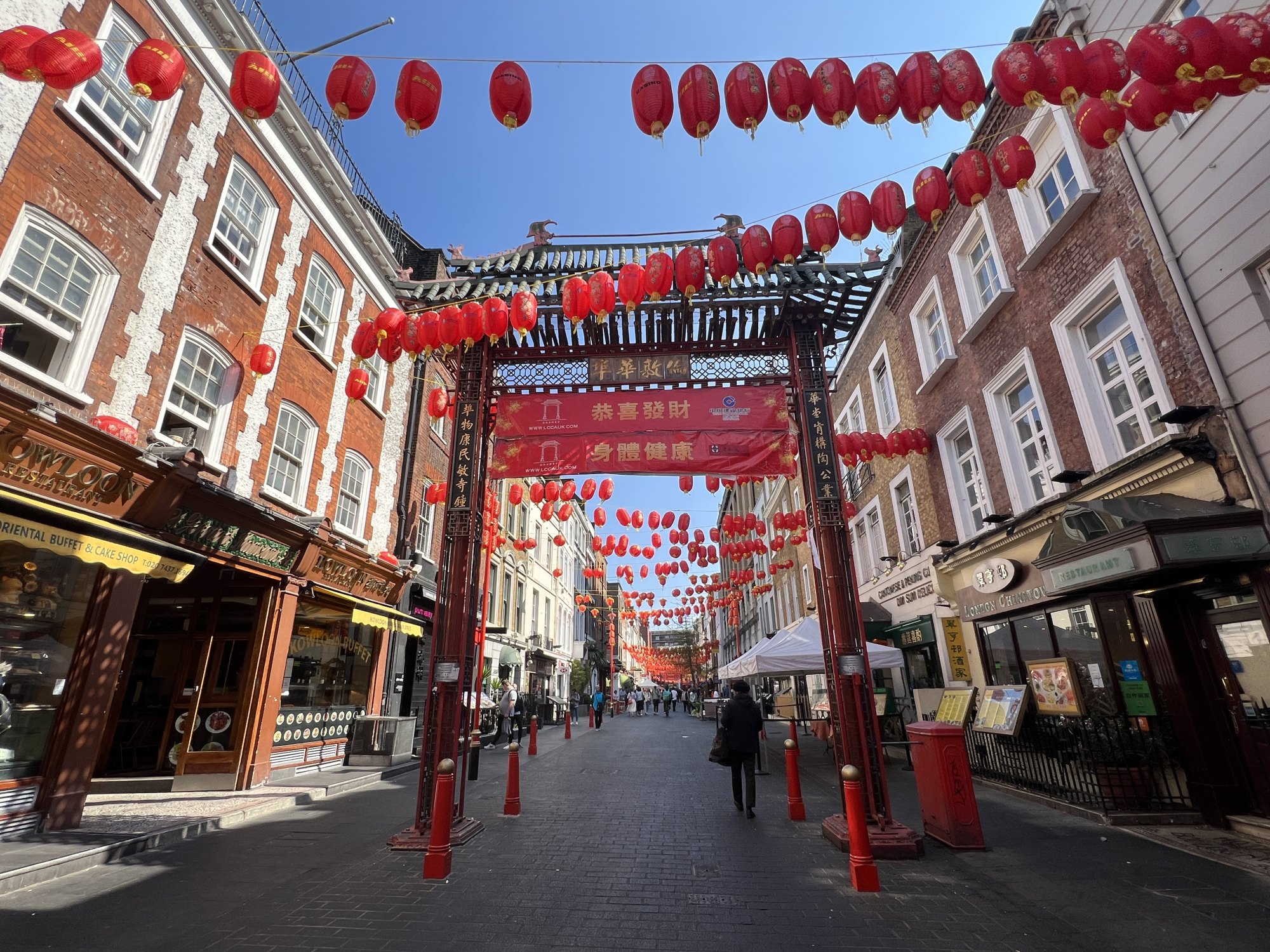
Several dim sum restaurants were opened by Hongkongers in Chinatown in the 1960s, along with London’s first Asian supermarket – Loon Fung, which brought bok choy to Britain and now operates stores in five locations in the capital. By 1985, Chinatown was officially recognised on maps. The lamp posts were painted red and gold, fu dog statues were put up on Gerrard Street and Chinese translations were added to the street signs.
The tour finishes with a meal – of course – at Cantonese banquet restaurant Golden Phoenix. While eating, I discover everyone else has some interest in China, too. There is a family whose daughter learned Mandarin at school and has visited China, and a young woman who lived near Wuhan and, like me, joined the tour because she missed China.
The following evening, I meet my Sinophile friend (somehow still not tired of being my sidekick) back in Chinatown, in front of the jade door of a Gerrard Street speakeasy called Opium. After a large bouncer checks my name against a list and speaks to someone called Lucas for several minutes through an FBI-style earpiece, we are let in from the bright spring evening to a dark stairwell. We feel our way up three flights to Opium, which is owned by London mogul Eric Yu, who grew up in Hong Kong and co-founded hospitality company The Breakfast Group.
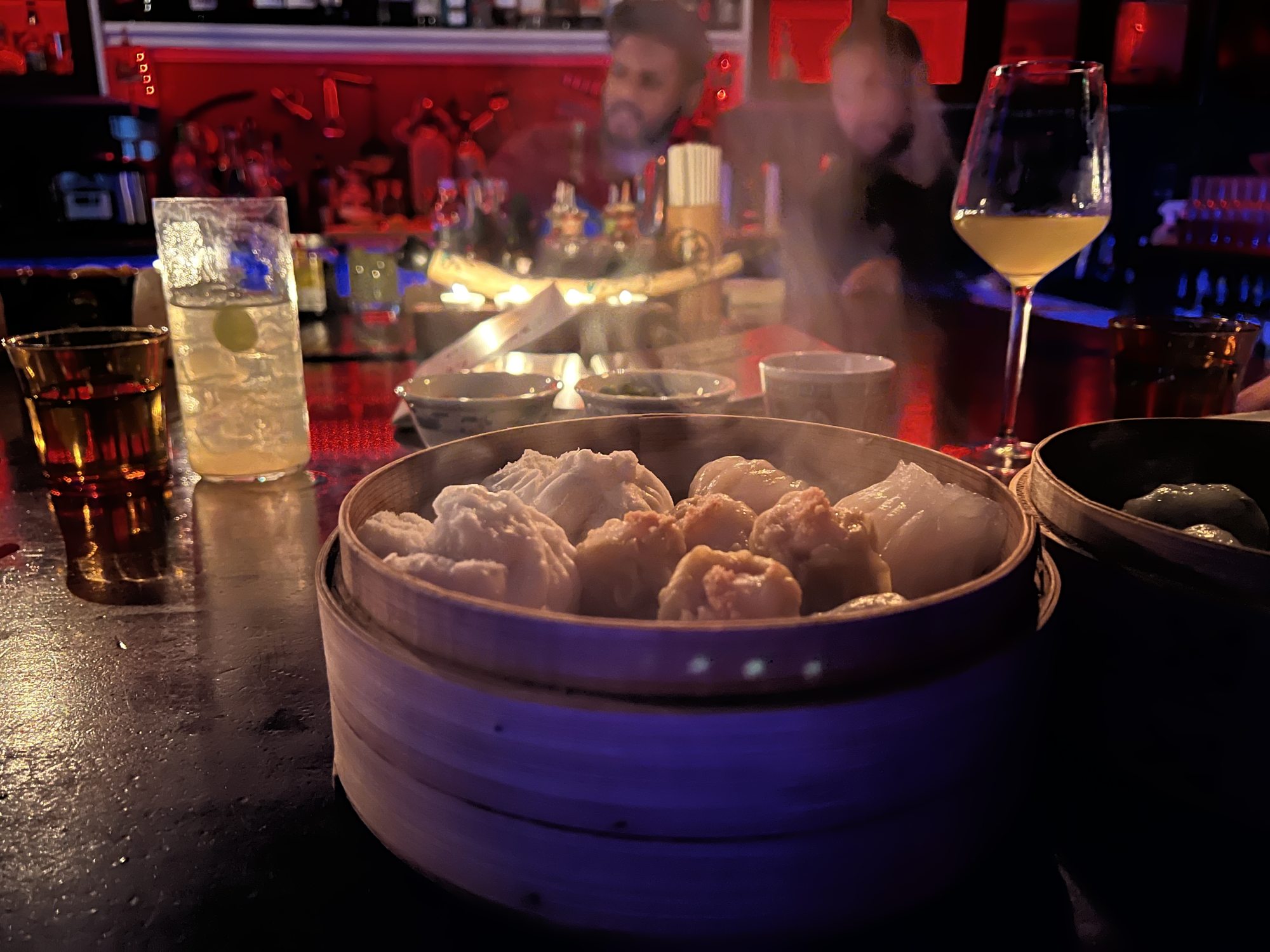
Seated at a dark-wood bar, we squint through the glow of red lanterns at a menu of Asian-themed cocktails. I order the Dragon Lady – an insane mix of Sri Lankan arrack, sake, chilli, vanilla, absinthe and osmanthus. Baskets of dim sum arrive; they might be tasty but the drinks are slipping down and the night is disappearing in a dim (sum) haze.
The following day, still reeling from the kick of the Dragon Lady, I seek fresh air in the wilds of East London’s Victoria Park. Here, in an unassuming spot, stands the Victoria Park Chinese Pagoda, a two-tiered tower surrounded by its own West Lake. Hangzhou-on-Thames! (I chuckle to myself.)
The pagoda’s history stretches back to the Victorian era. Built in Hyde Park and moved in 1847, it fell into disrepair and was demolished in the 1950s. An exact replica was built by the local council in 2012, as part of a £4.5 million (US$5.6 million) programme of major improvements in Victoria Park ahead of the London Olympic Games. The replacement was designed according to architect James Pennethorne’s original 1841 plans for the park, with the addition of a Chinese-style bridge across the lake, which Pennethorne had envisaged but didn’t build.
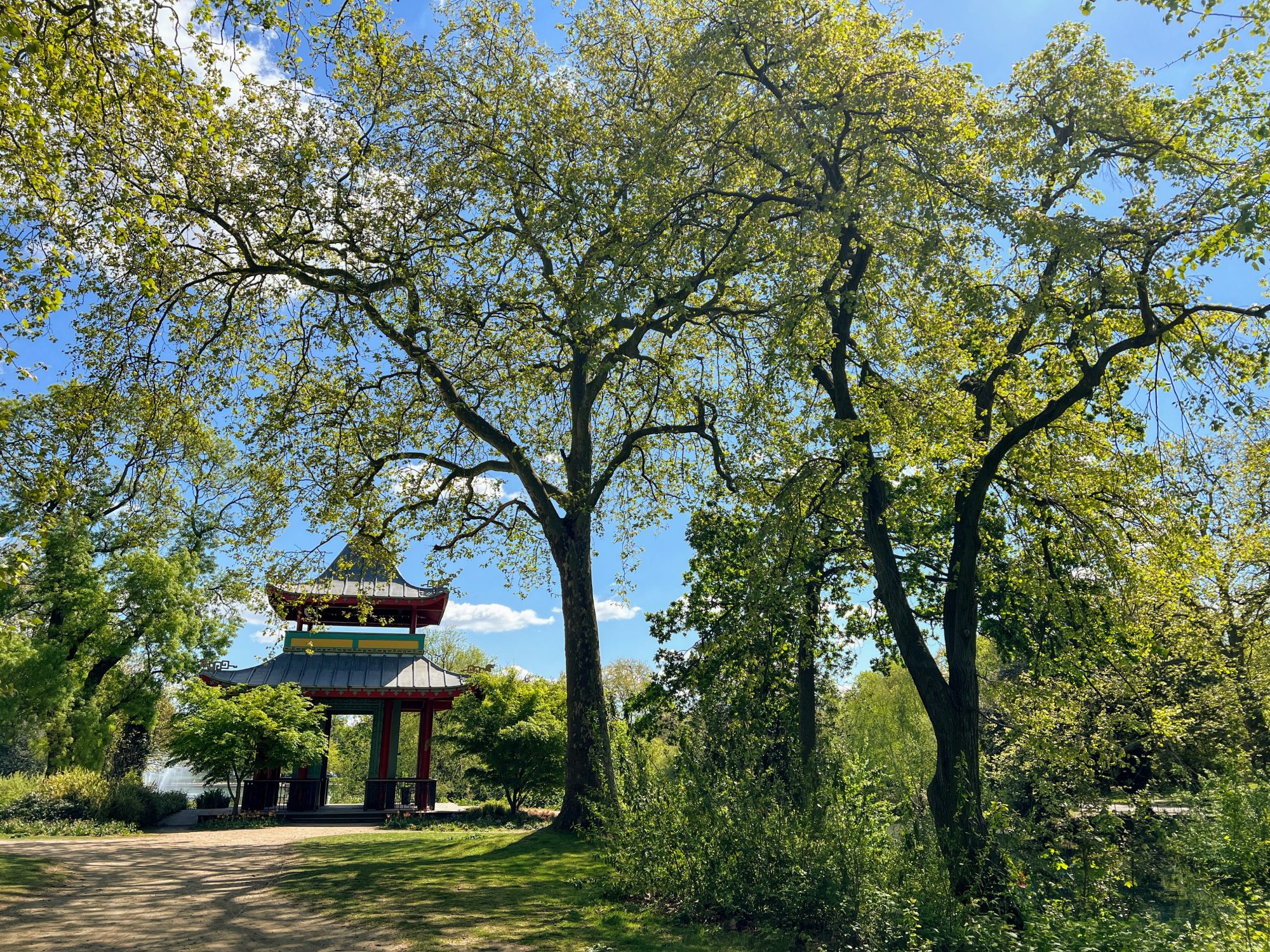
I’m familiar with most of the Chinese objects kept by the British and V&A museums, but there is one treasure I’ve yet to see: the stunning Gold Cups of Eternal Stability (1740-1741).
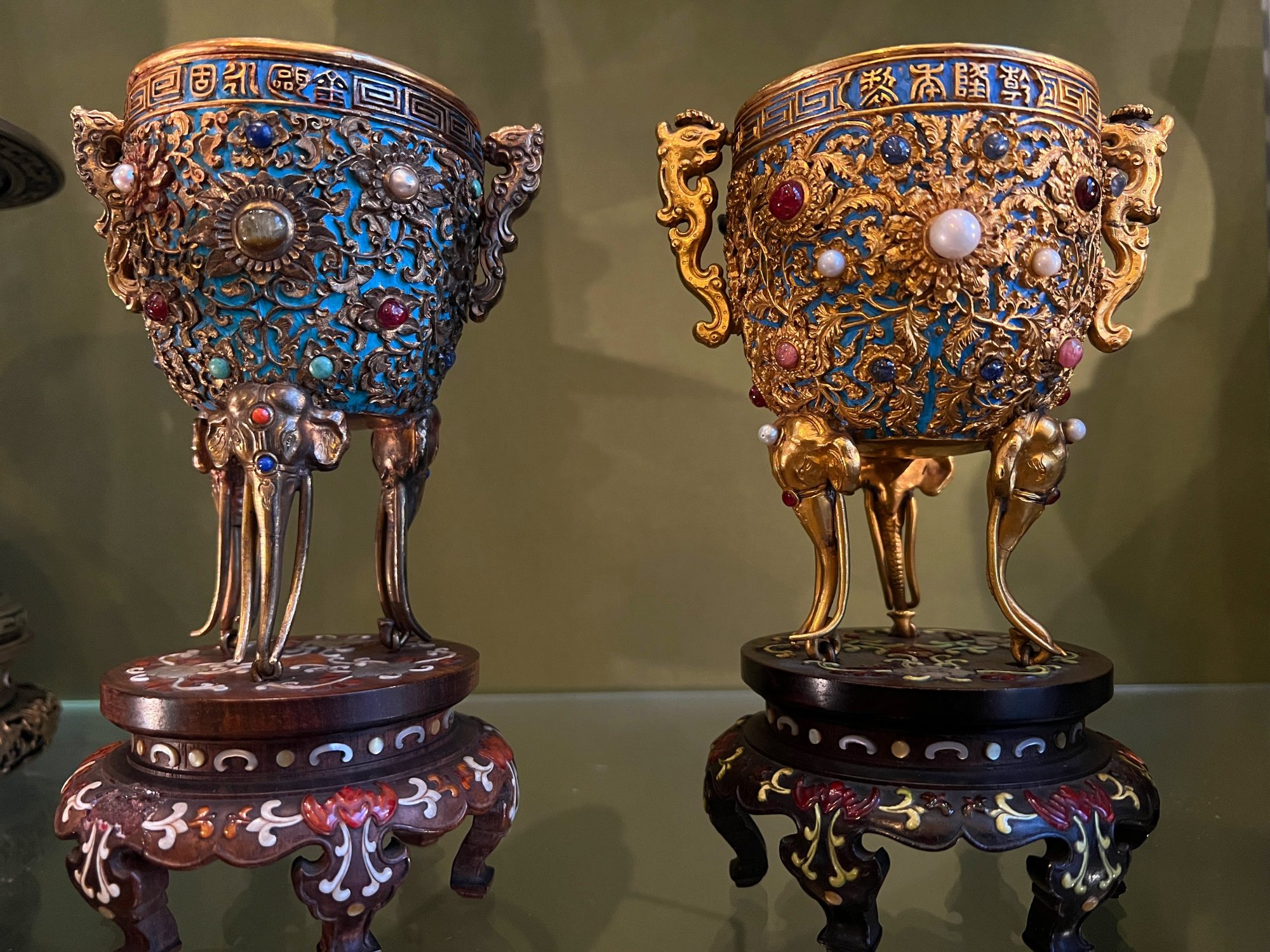
They now live in a quiet part of The Wallace Collection museum in Marylebone, so tucked away that I have to scour galleries full of European armour, French furniture and paintings of Venice by Canaletto before I find them, behind glass in a corner of a room labelled Oriental Armoury.
The intricate, gold decorations curled into dragon-shaped handles and inlaid with gemstones and pearls have me dreaming of walking through the vast halls of the Forbidden City once again.
My local takeaway, in Honor Oak, seems as good a place as any to see out my project. The Golden Tiger’s yellow and red sign promises, “Peking, Szechuan & Chinese Cuisine” and its interior is a time capsule from a presumed 1990s heyday: grey-tiled walls with a five-page menu posted up with tape; scroll paintings slightly askew and browned from cooking grease; a solitary red lantern dangling from the ceiling; outdated Lunar New Year calendars; and an e-bike, parked inside, next to some Banana Leaf-brand boxes.

Through a huge, perspex, anti-Covid screen, I order the most London of Chinese food options: Singapore fried noodles. Purportedly created in the 1950s or ’60s by Hong Kong cooks, the dish eventually made its way onto every British takeaway menu. The hair-thin vermicelli noodles are seasoned with an unusual combination of curry powder and chilli, and outfitted with “a bit of everything” meat, tiny prawns, onions and token green peppers.
The elderly proprietor takes my four one-pound coins, retreats to the back and relays my order to his wife in Mandarin: “Xinjiapo chaomian”.
So what of it all then? There is great Chinese food to be had in London, and a deep and long cultural history to appreciate. Even still, I’m no less itchy for that next trip to the real China.

